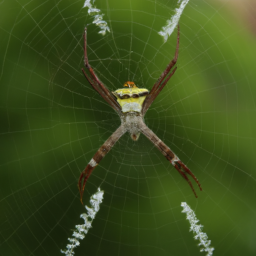Garden Spiders How Long
How Long Do Garden Spiders Live
How Long Can Garden Spiders Live?
Garden spiders, also called the orb-weaving spider, have a unique and important role in many gardens and outdoor spaces. Not only do garden spiders feed on other small pests, but their mesmerizing webs are a beautiful sight in nature. But how long do garden spiders live? There is no definite answer, as there are a variety of factors that determine a garden spider's lifespan.
Garden Spider Lifespan Factors
The lifespan of garden spiders can range anywhere from a few months to over two years. A large component in the length of a spider's life is the environment in which it lives. Cold temperates will tend to reduce the spider's lifespan, while warmer areas can extend it.
Parasites and the availability of prey are key factors in determining a garden spider's lifespan. If the food supply is scarce, it will limit the spider's chances of survival and can shorten its lifespan. Natural predators, such as wasps, can also reduce the number of garden spiders found in an area.
The health of an individual spider also has an effect on its lifespan. A sick or injured spider may die quicker than one in good condition.
Garden Spider Types
There are many varieties of garden spiders found around the world. Some of the most common include the Black and Yellow Argiope, Orb-web Spider, and Jumping Spider.
Black and Yellow Argiope
The Black and Yellow Argiope can generally be seen in many gardens and is known for its large size and striking yellow and black stripes. The average lifespan of the Black and Yellow Argiope is about one year, though it can vary greatly depending on the environment.
Orb-web Spider
The Orb-web Spider is a species of spider that is commonly found in gardens and other outside spaces. They weave intricate webs that trap their prey and are relatively easy to spot due to their bright colors. The average lifespan of the Orb-web Spider is between one and two years.
Jumping Spider
Jumping spiders are small spiders that can be seen scurrying around gardens. Though they cannot spin webs, they are strong jumpers and skilled hunters. The average lifespan of the Jumping Spider is between one and two years.
Ways to Protect Garden Spiders
To ensure a healthy spider population, steps can be taken to protect garden spiders. One way to do this is to eliminate any pesticides or insecticides, as these chemicals can be toxic to spiders. Not only are these generally unnecessary, but they can damage the ecosystem.
Gardeners can also take steps to create a habitat and provide food sources for garden spiders. Planting flowers that attract their prey, such as bees and other insects, can help ensure that their food supply is sufficient. Additionally, creating a damp environment near the basis of trees can help retain moisture and attract prey.
Brief Recap
Garden spiders, commonly referred to as orb-weaving spiders, have a unique role in outdoor spaces. The lifespan of garden spiders can range from a few months to more than two years and is largely dependent on the environment and the availability of prey. There are many varieties of garden spiders found around the world, including the Black and Yellow Argiope, Orb-web Spider, and Jumping Spider. To ensure the health of garden spiders, using pesticides and insecticides can be eliminated, and food sources can be provided.

Previous Page
Next Page
